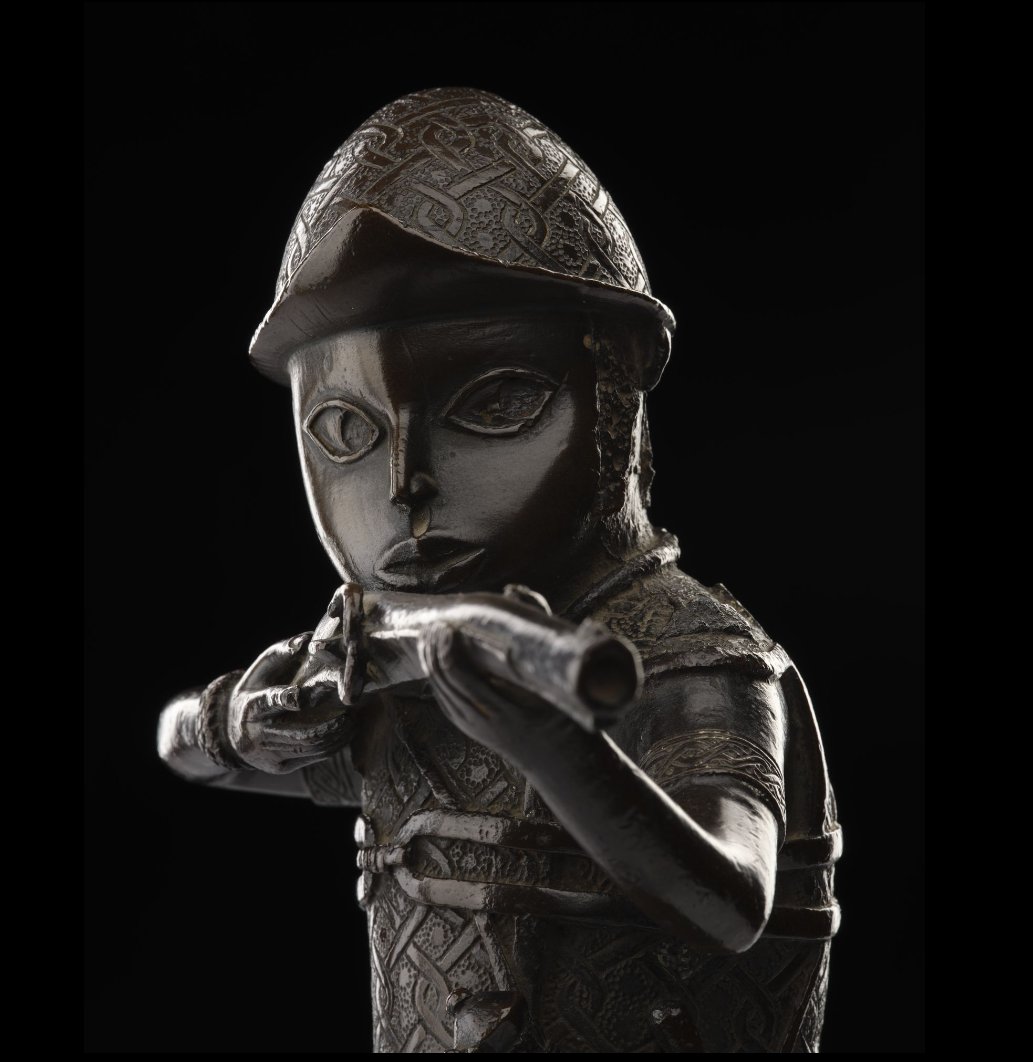“Unconnected by any ties with the neighbouring
nations... they consider the world..their own; & that what it contains they have a right to plunder”
Thread on the life & 16th-17th-century adventures of the Bijagos of the Bijagos archipelago, marine marauders of the Guinea coast

nations... they consider the world..their own; & that what it contains they have a right to plunder”
Thread on the life & 16th-17th-century adventures of the Bijagos of the Bijagos archipelago, marine marauders of the Guinea coast


The Bijagos were animists who lived in politically decentralised societies, with chiefs at the head of their communities, & their daily affairs being governed by male & female age-grade systems. They also pursued small-scale farming, fishing & maritime commerce. 



In Bijago society, the women were the only ones allowed to propose marriage, & they were the ones who built the houses & worked the fields. 



Employing their watercrafts known as almadies, which were normally seventy feet in length & could traverse the open sea, the Bijagos usually launched them to make raids upon mainland coastal polities in Guinea Bissau & the Senegambia region, capturing villagers & livestock. 



In 1532, the portuguese king in control of cape verde ordered the Bijagos to surrender & submit themselves & their islands to the authority of his brother Dom Luis, if not they (the Portuguese) would wage war on them & enslave them. 

As the Bijagos refused to harken to the demand of the Portuguese crown, Dom Luis in 1535 sent a Portuguese army commanded by Gomes Balieiro & Gomes Pacheco to attack Illha roxo (purple island), the largest & most attractive of the Bijagos islands. 

But this army was obliterated in combat by the Bijagos defending purple island from imperial Portuguese incursions 

André Álvares recounting this expedition circa 1580 writes "Conquistadors were once sent there..by order of the Infante. Gomes Balieiro &..Pacheco..& many others..to conquer..but..they were routed by the blacks & the captains & many people..who had come with..Pacheco were killed” 

As a result of this attack, the Bijagos refused to trade with the Portuguese for much of the 16th century, only allowing a few trusted europeans to trade on their islands, & they dealt harshly with Portuguese vessels shipwrecked on their islands, which they looted.. 

, enslaving its crews, & selling them back to the portuguese who went to redeem them at relatively low prices.
Now enslaving europeans was not uncommon or new in this region, as the...
Now enslaving europeans was not uncommon or new in this region, as the...

fulapos & arriatas of guinea bissua/salone circa mid 1500s-early-1600s routinely attacked european ships on their shores, enslaving the crews which they stripped naked while in captivity & fed before taking them to markets where goats-cows & dogs are sold, to be sold into slavery 

To challenge this Bijago invincibility, which their neighbours & new foes (Portuguese interlopers) recognised, was the King of Bussis, who decided to transform his egalitarian society into a militarized one. In his arsenal, he possessed cannons, muskets & gunpowder. In addition.. 



to this, he possessed watercrafts & a portuguese ship (his soldiers seized after they attacked it with french pirates who looted it, while his soldiers seized the ship & enslaved the crew that became servants of their king)
Instead of waiting for Bijago assaults, he kept a..
Instead of waiting for Bijago assaults, he kept a..
vigilante watch of the bijagos & dispatched defensive & offensive fleets against Bijago positions & to inspire dedication among his soldiers tasked with challenging Bijago supremacy, he promulgated a law that anyone who yielded ground in battle will be sold into slavery & any...
who failed in naval warfare must throw themselves overboard with a stone tied to their necks & he made sure the battles did not occur on land but at sea.
Despite these innovative acts from the King of Bussis, the Bijagos continued their raids, improving their watercrafts by adding thick wooden screens that kept off musket balls discharged from muskets fired by the crew aboard ships & boats which they routinely assaulted & captured 



At the turn of the 17th century, with the Bijagos not still desisting from their raids, they also started assaulting fortified Portuguese settlements such as the Guinela, whose chapel dedicated to Mary was burnt by Bijagos after their assault on it in 1609... 

while continuing to improve their watercrafts which were essential & vital in giving them an edge militarily over their African & portuguese neighbours. 



• • •
Missing some Tweet in this thread? You can try to
force a refresh








![“Cavalier Peulh ” [Peul (Pullo) cavalryman], 1850. Watercolour drawing by Hyacinthe Hecquard from the Senegambia area. Wolofs in the pre-modern era were in constant liaison with the Pullos who were their neighbours in the Senegmabian area. They also got their horses from them & had a caste of Pullos who lived among them, who were part of the Wolof community & society.](https://pbs.twimg.com/media/GUTfXQNXsAAG3Rj.png)


















